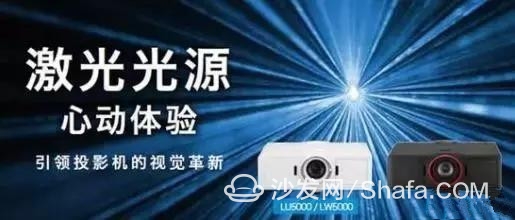
In addition, according to the audio-visual circle, many projection brands this year are also not satisfied with the betting projection products market, will be appropriate according to market demand to introduce some 80-inch interactive tablet products with touch solutions, do some different supplements, walk on two legs .
Jibang Consulting LED Research Center also analyzed that the biggest dimension of demand for the future business education market is still the increase in brightness demand. The estimated market share of 3,000 lm or more by 2020 will reach 43%.

In terms of LED light sources, there are still bottlenecks due to the brightness and heat dissipation of LEDs. Therefore, the current consumer market and home theaters that focus on 2,000 lm or less will be the main ones. In the future, with the improvement of technology and cost reduction, it will gradually grab around 3,000 lm. The market; Laser light source has advantages in brightness, product life and color saturation, the only drawback is the high price. However, the laser light source has bright brightness, long product life, and a thinner and lighter projector design. The laser light source projector will achieve a market penetration rate of 30% by 2020.
The Ovid data organization also showed that in 2016, the laser projection market sales reached 4.4 billion yuan, a year-on-year growth rate of 194.2%. According to its forecast, the laser projection market in 2017 will continue to maintain rapid growth. Thanks to the pioneering applications in the home and business sectors, its scale will be pushed up to 16.23 billion yuan, and sales volume is expected to reach 300,000 units.

The main function of the PWM Solar Controller is to manage the charging and discharging process between solar panels and batteries in solar power generation systems. It is a traditional charge controller that controls the charging voltage and current through pulse width modulation technology to maintain the charging state of the battery and protect the battery.
Main effect:
Charging control: PWM Solar Controller controls the charging voltage and current through pulse width modulation technology to ensure that the battery is charged at an appropriate voltage and current to prolong the service life of the battery.
Overcharge protection: The PWM Solar Controller can monitor the charging status of the battery, and when the battery is fully charged, it will automatically stop charging to avoid battery damage caused by overcharging.
Over-discharge protection: PWM Solar Controller can monitor the discharge state of the battery. When the battery power is lower than a certain level, it will automatically stop discharging to avoid battery damage caused by over-discharge.
Differences from other charge controllers:
Modulation technology: PWM Solar Controller uses pulse width modulation technology to control the charging and discharging voltage and current to maintain the charging state of the battery. In contrast, MPPT Solar Controller uses maximum power point tracking technology to adjust the output voltage and current of solar panels in real-time to achieve maximum power output.
Energy conversion efficiency: Compared with the MPPT Solar Controller, the energy conversion efficiency of the PWM Solar Controller is lower. Because the pulse width modulation technology cannot adjust the operating point of the Solar Panel in real-time, the output power of the solar panel may not be maximized.
Application Scenario: PWM Solar Controller is a traditional charge controller suitable for small-scale, low-power solar power generation systems. The MPPT Solar Controller is suitable for larger-scale, high-power solar power generation systems to improve energy utilization efficiency.
Overall, the main role of the PWM Solar Controller is to manage the charging and discharging process in the solar power generation system and protect the battery from damage. Compared with MPPT Solar Controller, it uses traditional pulse width modulation technology, and the energy conversion efficiency is lower. Suitable for small-scale, low-power solar power generation systems. The MPPT Solar Controller uses maximum power point tracking technology, which can improve the energy utilization efficiency of solar panels, and is suitable for larger-scale, high-power solar power generation systems.
solar panel pwm controller, 12v pwm solar charge controller, pwm solar charge controller, best pwm solar charge controller, pwm solar charge controller for lithium
Ningbo Autrends International Trade Co., Ltd. , https://www.china-energystorage.com